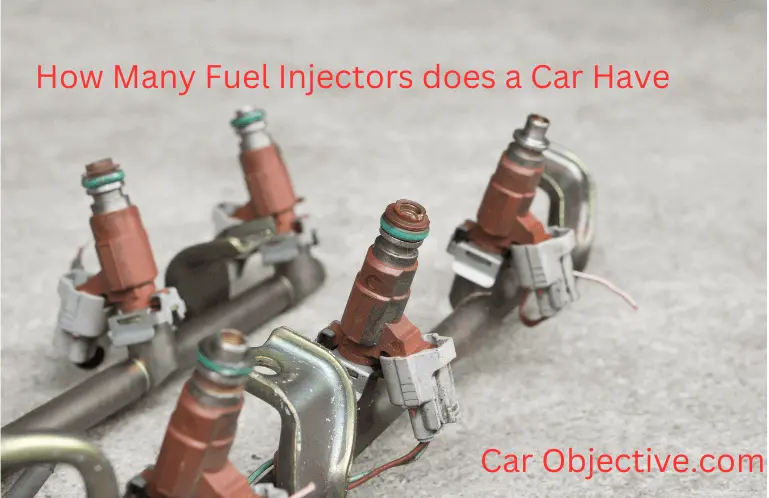The fuel system in a vehicle is a marvel of engineering, operating silently yet efficiently to deliver one of the most crucial elements of any internal combustion engine: fuel. But have you ever paused to ponder the myriad components of this intricate system? Among the unsung heroes of the fuel delivery process are the fuel injectors. This article delves into the fascinating world of fuel injectors, elucidating their vital role and, more importantly, addressing a common question: how many fuel injectors does a car have?
To begin with, let’s consider the basic function of a fuel injector. The primary role of this component is to spray a precise amount of fuel directly into the combustion chamber of the engine. This delicate process ensures that the fuel mixes optimally with air for ignition, facilitating efficient combustion and optimal engine performance. Yet, the number of injectors varies across different types of vehicles, and understanding the underlying principles can spark curiosity.
Typically, most gasoline-powered vehicles are equipped with one fuel injector per cylinder. In standard four-cylinder engines, this translates to four injectors. However, variations abound. Consider a six-cylinder engine; here, you would find six fuel injectors fulfilling the same essential role. It’s tempting to assume that more cylinders mean more injectors, but the reality is somewhat more intricate. In some advanced engines, particularly those employing turbocharging or variable valve timing, manufacturers might employ multiple injectors per cylinder to fine-tune performance and efficiency. This revelation prompts a deeper investigation into how modern engineering pushes boundaries.
As a general rule, enthusiasts and technicians alike often refer to a simple formula: the number of fuel injectors is generally equivalent to the number of engine cylinders. This notion holds true in many cases, especially for naturally aspirated engines. However, with the evolution of automotive technology, things become more complex. For example, some performance vehicles or engines designed for extreme power output can feature dual-injector systems, with both a port fuel injector and a direct fuel injector per cylinder. The dual approach allows for superior atomization of fuel, enhancing efficiency and power.
Nevertheless, diesel engines exhibit different characteristics. While many diesel engines also feature one injector per cylinder, some utilize multiple injection strategies to achieve complete combustion. This difference can drastically influence fuel consumption and emissions. The realization that fuel injectors are not simply a uniform solution across all engine types opens the door to further exploration of automotive design principles.
Injectors and Engine Types
Fuel injectors vary not only in number but also in type and function, reflecting the diverse nature of vehicle engines. In gasoline engines, you’re likely to encounter two predominant types: port fuel injectors and direct fuel injectors. Port injectors spray fuel into the intake manifold, mixing it with air before it enters the cylinder. This time-honored method fosters better fuel atomization, making it well-suited for lower RPMs and achieving smoother operation.
Conversely, direct injectors inject fuel directly into the combustion chamber at high pressures. This method aims to enhance fuel efficiency and performance by promoting more complete combustion. As fuel injectors evolve, so too do their capabilities. Nowadays, advancements in technology have led to fuel injectors equipped with solenoids or piezoelectric actuators, allowing for rapid opening and closing and thus enhancing fuel delivery precision.
Fuel Injection Systems: A Closer Look
Exploring fuel injection systems further, it becomes evident that their architecture isn’t merely functional; it’s a reflection of engineering ingenuity. The majority of modern vehicles employ electronic fuel injection (EFI) systems, as opposed to older mechanical methods. EFI utilizes computer-controlled systems to manage fuel delivery dynamically, adapting to driving conditions, load demands, and even atmospheric conditions. This real-time adaptability not only enhances performance but also significantly improves fuel economy.
Transitioning from traditional carbureted systems to EFI marked a watershed moment in automotive history. Yet, the conversation doesn’t end there. Hybrid and electric vehicles showcase an entirely different fuel delivery paradigm. Even within these alternative powertrains, the significance of fuel injectors remains, albeit in new configurations aimed at optimizing performance and emissions further.
Maintenance and Performance
Fuel injectors, while robust, require maintenance to function optimally. Clogged or malfunctioning injectors can wreak havoc on engine performance, leading to inefficient combustion, increased emissions, and subpar fuel economy. Fortunately, various methods exist for injector cleaning and upkeep, allowing drivers to prolong their lifecycle. Regular maintenance checks offer insights into their condition, ensuring that engines remain in peak form.
In conclusion, the number of fuel injectors a car has is not simply a question of quantity but an invitation to explore the depth and richness of automotive technology. Understanding this essential component of the fuel system reveals a fascinating interplay between engineering, performance, and efficiency. Each vehicle, each engine, tells a unique story. This perspective not only piques our curiosity but also enhances our appreciation for the complexities of modern vehicles. So, the next time you step into a car, consider the marvel working away under the hood—fuel injectors, the quiet orchestrators of engine performance.
